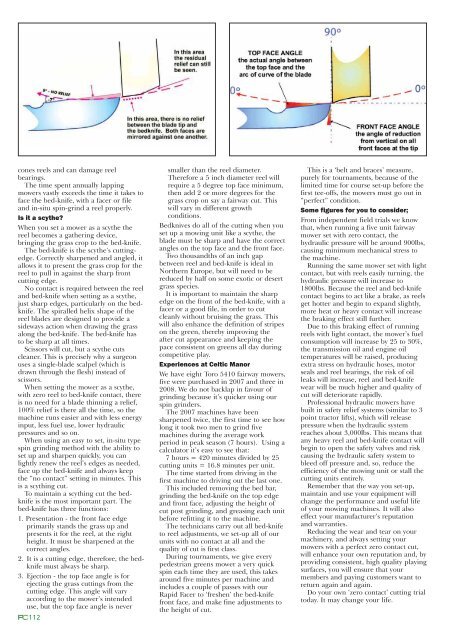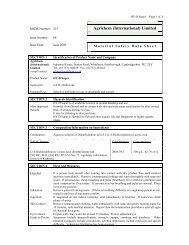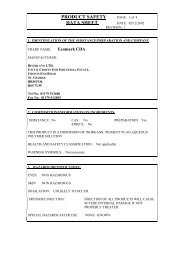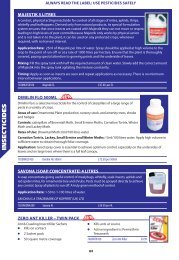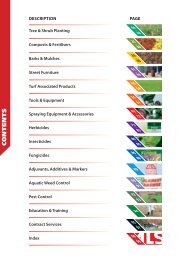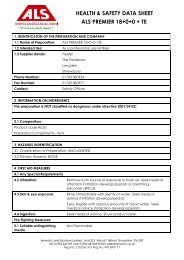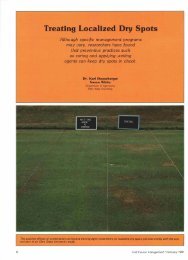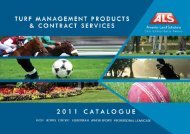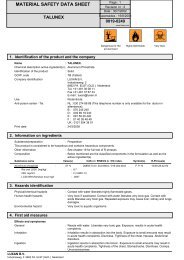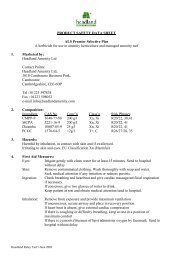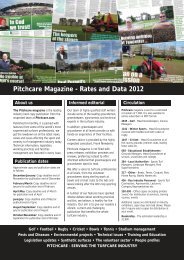Earning his Spurs - Pitchcare
Earning his Spurs - Pitchcare
Earning his Spurs - Pitchcare
You also want an ePaper? Increase the reach of your titles
YUMPU automatically turns print PDFs into web optimized ePapers that Google loves.
cones reels and can damage reel<br />
bearings.<br />
The time spent annually lapping<br />
mowers vastly exceeds the time it takes to<br />
face the bed-knife, with a facer or file<br />
and in-situ spin-grind a reel properly.<br />
Is it a scythe?<br />
When you set a mower as a scythe the<br />
reel becomes a gathering device,<br />
bringing the grass crop to the bed-knife.<br />
The bed-knife is the scythe’s cuttingedge.<br />
Correctly sharpened and angled, it<br />
allows it to present the grass crop for the<br />
reel to pull in against the sharp front<br />
cutting edge.<br />
No contact is required between the reel<br />
and bed-knife when setting as a scythe,<br />
just sharp edges, particularly on the bedknife.<br />
The spiralled helix shape of the<br />
reel blades are designed to provide a<br />
sideways action when drawing the grass<br />
along the bed-knife. The bed-knife has<br />
to be sharp at all times.<br />
Scissors will cut, but a scythe cuts<br />
cleaner. T<strong>his</strong> is precisely why a surgeon<br />
uses a single-blade scalpel (which is<br />
drawn through the flesh) instead of<br />
scissors.<br />
When setting the mower as a scythe,<br />
with zero reel to bed-knife contact, there<br />
is no need for a blade thinning a relief,<br />
100% relief is there all the time, so the<br />
machine runs easier and with less energy<br />
input, less fuel use, lower hydraulic<br />
pressures and so on.<br />
When using an easy to set, in-situ type<br />
spin grinding method with the ability to<br />
set up and sharpen quickly, you can<br />
lightly renew the reel’s edges as needed,<br />
face up the bed-knife and always keep<br />
the “no contact” setting in minutes. T<strong>his</strong><br />
is a scything cut.<br />
To maintain a scything cut the bedknife<br />
is the most important part. The<br />
bed-knife has three functions:<br />
1. Presentation - the front face edge<br />
primarily stands the grass up and<br />
presents it for the reel, at the right<br />
height. It must be sharpened at the<br />
correct angles.<br />
2. It is a cutting edge, therefore, the bedknife<br />
must always be sharp.<br />
3. Ejection - the top face angle is for<br />
ejecting the grass cuttings from the<br />
cutting edge. T<strong>his</strong> angle will vary<br />
according to the mower’s intended<br />
use, but the top face angle is never<br />
112<br />
smaller than the reel diameter.<br />
Therefore a 5 inch diameter reel will<br />
require a 5 degree top face minimum,<br />
then add 2 or more degrees for the<br />
grass crop on say a fairway cut. T<strong>his</strong><br />
will vary in different growth<br />
conditions.<br />
Bedknives do all of the cutting when you<br />
set up a mowing unit like a scythe, the<br />
blade must be sharp and have the correct<br />
angles on the top face and the front face.<br />
Two thousandths of an inch gap<br />
between reel and bed-knife is ideal in<br />
Northern Europe, but will need to be<br />
reduced by half on some exotic or desert<br />
grass species.<br />
It is important to maintain the sharp<br />
edge on the front of the bed-knife, with a<br />
facer or a good file, in order to cut<br />
cleanly without bruising the grass. T<strong>his</strong><br />
will also enhance the definition of stripes<br />
on the green, thereby improving the<br />
after cut appearance and keeping the<br />
pace consistent on greens all day during<br />
competitive play.<br />
Experiences at Celtic Manor<br />
We have eight Toro 5410 fairway mowers,<br />
five were purchased in 2007 and three in<br />
2008. We do not backlap in favour of<br />
grinding because it’s quicker using our<br />
spin grinders.<br />
The 2007 machines have been<br />
sharpened twice, the first time to see how<br />
long it took two men to grind five<br />
machines during the average work<br />
period in peak season (7 hours). Using a<br />
calculator it’s easy to see that:<br />
7 hours = 420 minutes divided by 25<br />
cutting units = 16.8 minutes per unit.<br />
The time started from driving in the<br />
first machine to driving out the last one.<br />
T<strong>his</strong> included removing the bed bar,<br />
grinding the bed-knife on the top edge<br />
and front face, adjusting the height of<br />
cut post grinding, and greasing each unit<br />
before refitting it to the machine.<br />
The technicians carry out all bed-knife<br />
to reel adjustments, we set-up all of our<br />
units with no contact at all and the<br />
quality of cut is first class.<br />
During tournaments, we give every<br />
pedestrian greens mower a very quick<br />
spin each time they are used, t<strong>his</strong> takes<br />
around five minutes per machine and<br />
includes a couple of passes with our<br />
Rapid Facer to ‘freshen’ the bed-knife<br />
front face, and make fine adjustments to<br />
the height of cut.<br />
T<strong>his</strong> is a ‘belt and braces’ measure,<br />
purely for tournaments, because of the<br />
limited time for course set-up before the<br />
first tee-offs, the mowers must go out in<br />
“perfect” condition.<br />
Some figures for you to consider;<br />
From independent field trials we know<br />
that, when running a five unit fairway<br />
mower set with zero contact, the<br />
hydraulic pressure will be around 900lbs,<br />
causing minimum mechanical stress to<br />
the machine.<br />
Running the same mower set with light<br />
contact, but with reels easily turning, the<br />
hydraulic pressure will increase to<br />
1800lbs. Because the reel and bed-knife<br />
contact begins to act like a brake, as reels<br />
get hotter and begin to expand slightly,<br />
more heat or heavy contact will increase<br />
the braking effect still further.<br />
Due to t<strong>his</strong> braking effect of running<br />
reels with light contact, the mower’s fuel<br />
consumption will increase by 25 to 30%,<br />
the transmission oil and engine oil<br />
temperatures will be raised, producing<br />
extra stress on hydraulic hoses, motor<br />
seals and reel bearings, the risk of oil<br />
leaks will increase, reel and bed-knife<br />
wear will be much higher and quality of<br />
cut will deteriorate rapidly.<br />
Professional hydraulic mowers have<br />
built in safety relief systems (similar to 3<br />
point tractor lifts), which will release<br />
pressure when the hydraulic system<br />
reaches about 3,000lbs. T<strong>his</strong> means that<br />
any heavy reel and bed-knife contact will<br />
begin to open the safety valves and risk<br />
causing the hydraulic safety system to<br />
bleed off pressure and, so, reduce the<br />
efficiency of the mowing unit or stall the<br />
cutting units entirely.<br />
Remember that the way you set-up,<br />
maintain and use your equipment will<br />
change the performance and useful life<br />
of your mowing machines. It will also<br />
effect your manufacturer’s reputation<br />
and warranties.<br />
Reducing the wear and tear on your<br />
machinery, and always setting your<br />
mowers with a perfect zero contact cut,<br />
will enhance your own reputation and, by<br />
providing consistent, high quality playing<br />
surfaces, you will ensure that your<br />
members and paying customers want to<br />
return again and again.<br />
Do your own ‘zero contact’ cutting trial<br />
today. It may change your life.


